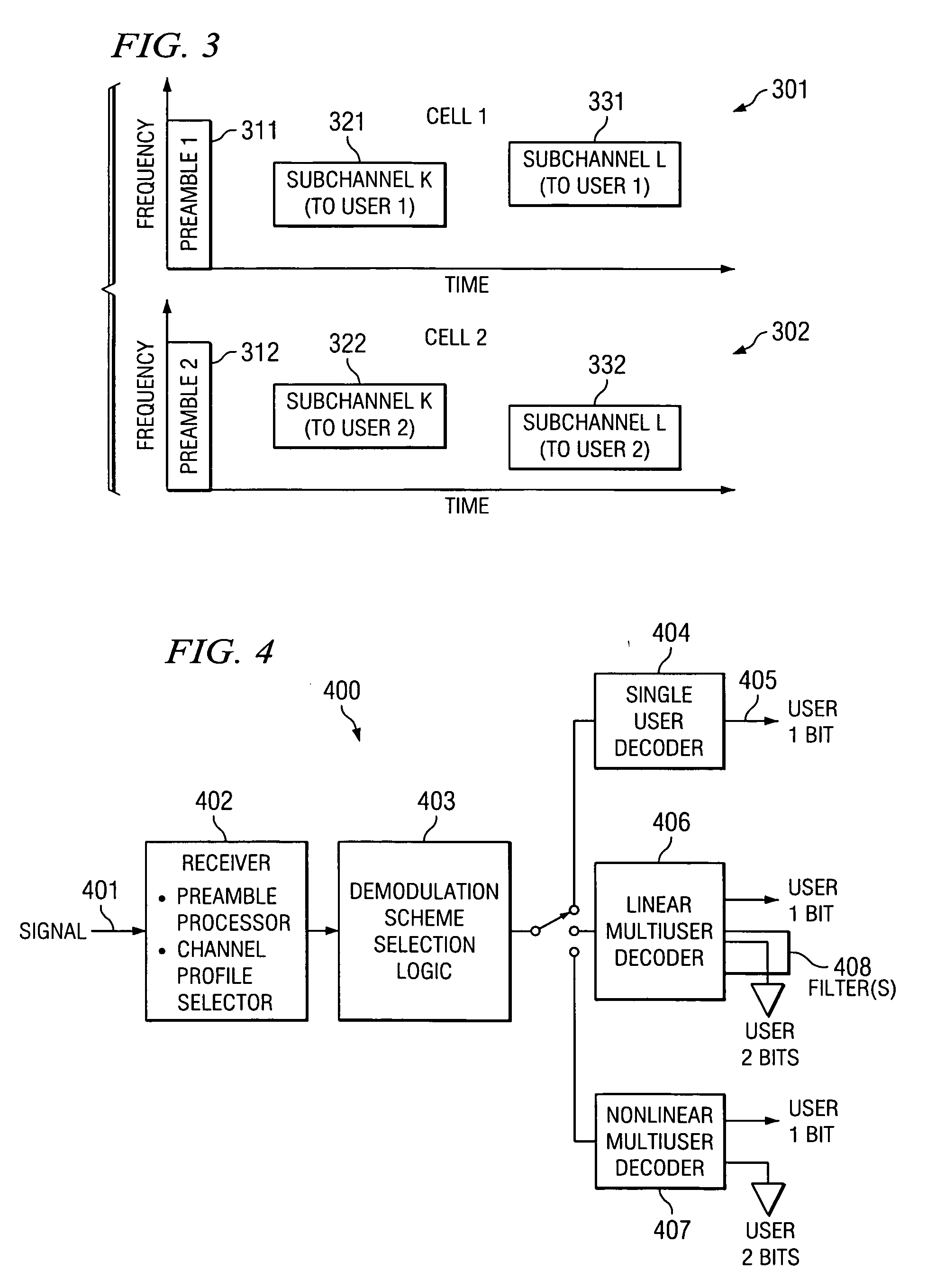Intelligent demodulation systems and methods in an OFDMA multicell network
- Summary
- Abstract
- Description
- Claims
- Application Information
AI Technical Summary
Benefits of technology
Problems solved by technology
Method used
Image
Examples
Embodiment Construction
[0021]FIG. 1 is a diagrammatic view of at least a portion of multi-cell OFDMA based wireless communication system 100 employing the present systems and methods. Each cell, 101, 102 and 103, has a corresponding base station, 111, 112 and 113, respectively. Each cell may have multiple sectors, with each sector serviced by one or more antennas or antenna arrays of a base station, such as antenna 121 of base station 111 and antenna 122 of base station 112. Multiple antennas or antenna arrays may be used by base stations 111, 112 and 113 to provide beam forming, diversity transmission and reception, and the like. Base station 111 is shown in communication with terminal 131. For purposes of illustrating the present systems and methods, subchannel K of system 100 is being used to communicate with terminal 131. However, base station 112 is in communication with terminal 132 and again for purposes of illustrating the present invention, is using the same subchannel K. As one of ordinary skill...
PUM
 Login to View More
Login to View More Abstract
Description
Claims
Application Information
 Login to View More
Login to View More - R&D
- Intellectual Property
- Life Sciences
- Materials
- Tech Scout
- Unparalleled Data Quality
- Higher Quality Content
- 60% Fewer Hallucinations
Browse by: Latest US Patents, China's latest patents, Technical Efficacy Thesaurus, Application Domain, Technology Topic, Popular Technical Reports.
© 2025 PatSnap. All rights reserved.Legal|Privacy policy|Modern Slavery Act Transparency Statement|Sitemap|About US| Contact US: help@patsnap.com



